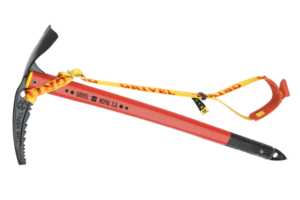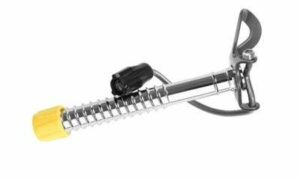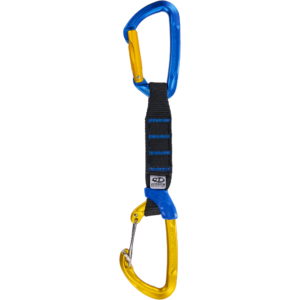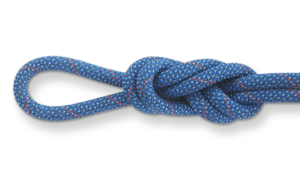Before you go to your next adventurous ice climbing trip, consider this beginners guide to ice climbing so in the middle you won’t be worry for right gears.
What is Ice Climbing
Sure, all of you are familiar with the term so let’s dive in Ascending ice formations with an angle known as ice climbing. Ice climbing typically refers to the roped and protected ascent of terrain features like icefalls, frozen waterfalls, and cliffs and rock slabs covered in ice that has been refrozen by water flows.
And just like a surgeon is useless without its instruments ice climbing is incomplete without its proper gears or instruments. “There is only one rule in ice climbing” Do not fall, Conrad Anker commanded with a deeply furrowed face. Then he solemnly patted the ice axes crossed against his chest.
Having the right equipment can make the difference between a successful expedition and one that doesn’t even get off the ground, just like with any other outdoor activity. Below is a list of all the equipment you will need for your upcoming ice climbing excursion to ensure that you are well equipped.
You will use technical equipment to aid in your ice climbing. It might take the form of accessories that you use and wear while doing different ice climbing jobs. Therefore, before embarking on any trips, you must carefully select your equipment and use it at least once.
Don’t forget to check out the best climbing brands as well.
A Short Gears List On Guide To Ice Climbing
- Belay Device
- Carabiners
- Crampons
- Harness
- Ice Axes
- Ice Screws
- Quickdraws
- Rope

Belay Device
A belay device is a piece of mechanical gear that makes it easier to apply tension to a climbing rope in order to keep another climber from falling. Metal belay devices provide leverage and reduce the effort required to feed out the proper quantities of rope for climbers to use.

Carabiners
A carabiner is a metal loop with a spring-loaded gate that is often made of steel. This is used in ice climbing to swiftly attach and detach a rope from the harness. Due to their size and form, pear/HMS carabiners are most usually used for belaying and rappelling because they allow for the necessary hitch with two strands of rope.

Crampons
The traction aids known as crampons are fastened to the bottom of climbing boots. They are often composed of a steel alloy, and the spikes on the bottom help the wearer maintain balance on glaciers and negotiate ice falls. According to the user’s requirements, different binding systems are typically used to attach crampons to boots. Since you need as much surface area on the ice as possible to move, semi-rigid ones with the step-in system and 14 points are the most popular ones for ice climbing.

Harness
The design and presence of ice clipper slots are where an ice/alpine climbing harness and a rock-climbing harness diverge. Modern harnesses made expressly for winter use will be made of fibers like dyneema or spectra to lighten the load and repel moisture. Even though they are unquestionably great additions, a rock-climbing gear will do for ice climbing. But having the tiny loops for ice clippers integrated into the harness is incredibly useful. This makes it possible to easily reach screws for racking and putting. With the new Petzl Caritool clippers, this requirement is effectively eliminated because they may be placed wherever on the harness.

Ice Axes
Ice axes are one of the gear debates’ most contentious subtopics. People frequently choose their favourites and argue vehemently for them. While each tool has its own advantages and disadvantages, they may typically be categorized into two broad categories: all-purpose or alpine ice tools, and steep ice tools. While both will function effectively on a range of terrain, they are both designed to perform best in particular environments.
All-purpose or alpine ice tools can be identified by their moderate pick angle, somewhat bent shaft, and plunge-able spike. In order to best position themselves for steep to overhanging terrain, steep ice or mixed climbing tools differ from other climbing tools by having a steeper pick angle and typically an offset grip. They are the best option for difficult terrain and provide a range of grips for changing hand positions.

Ice screws
The character of the pitches and your level of comfort will determine how many ice screws are needed for any given route. Bring just enough gear to feel safe but not too much that it hinders your climbing. In general, 10–12 screws ought to be sufficient. If it’s cold and you’re going slowly, pack extra gear; if the ice is slick and you’re climbing with the most confidence, bring less. If you’re creating gear anchors (two per station), carry four extras, and if you’re climbing a slot canyon with bolts and short pitches, maybe bring less.

Quickdraws
When lead climbing, quickdraws are used on bolt anchors to allow the rope to pass freely through them. Typically, these gadgets consist of a straight-gate and bent-gate carabiner connected by a piece of leather or plastic. While the bent gate is clipped to the rope, the straight gate is attached to the anchor. These are typically offered by mountain guides who bring along group gear for their excursions. If not, the majority of outdoor sporting goods retailers provide rentals.

Ropes
The two types of rope used for ice climbing trips are dynamic and static. The best rope for climbing is dynamic because it is more elastic, which is useful if you slip or fall. For rappelling, a static rope is stiffer and more suitable. Ice climbers should often pack 60 metres of rope with a diameter of eight to ten millimetres.
Since it typically occurs at temperatures considerably below freezing, ice climbing is regarded as an extreme sport. Therefore, having the right gear is crucial for an ice climbing venture to be successful. Most well-known locations for ice climbing will have outlets to rent equipment, and many guides will include technical equipment in the cost of their trip. However, purchasing your own equipment may be useful if you intend to do a lot of ice climbing.
In other words, if you want your expedition to be a successful venture than you need to be prepared with proper tools.






